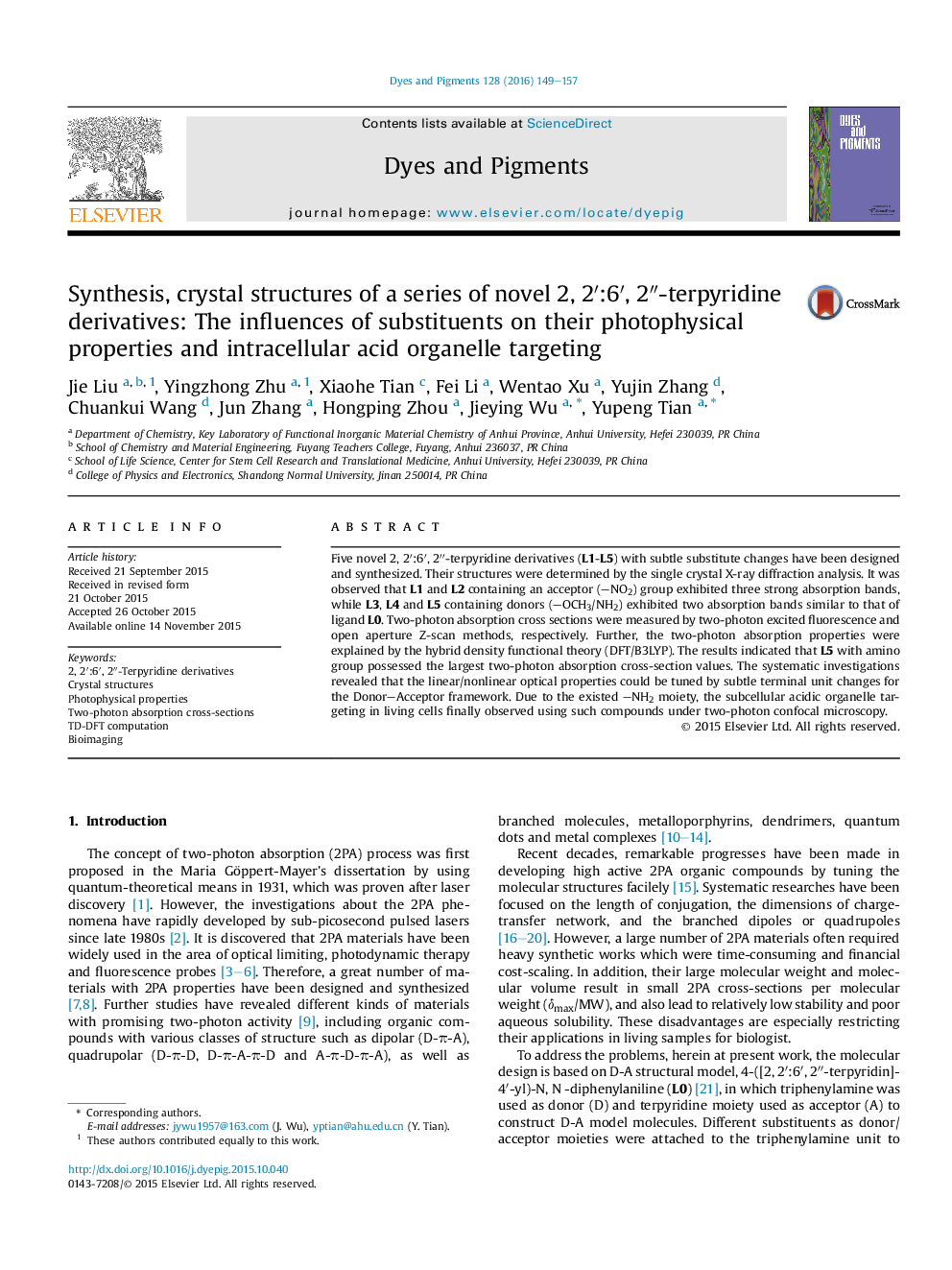| Article ID | Journal | Published Year | Pages | File Type |
|---|---|---|---|---|
| 175477 | Dyes and Pigments | 2016 | 9 Pages |
•Photophysical properties were tuned by subtle substitute changes on host framework.•Crystallography structures of novel terpyridine derivatives were determined.•Two-photon absorption properties were studied both experimentally and theoretically.•Relationships between the structures and properties were investigated.•Applications in bioimaging for the terpyridine derivatives were carried out.
Five novel 2, 2′:6′, 2″-terpyridine derivatives (L1-L5) with subtle substitute changes have been designed and synthesized. Their structures were determined by the single crystal X-ray diffraction analysis. It was observed that L1 and L2 containing an acceptor (–NO2) group exhibited three strong absorption bands, while L3, L4 and L5 containing donors (–OCH3/NH2) exhibited two absorption bands similar to that of ligand L0. Two-photon absorption cross sections were measured by two-photon excited fluorescence and open aperture Z-scan methods, respectively. Further, the two-photon absorption properties were explained by the hybrid density functional theory (DFT/B3LYP). The results indicated that L5 with amino group possessed the largest two-photon absorption cross-section values. The systematic investigations revealed that the linear/nonlinear optical properties could be tuned by subtle terminal unit changes for the Donor–Acceptor framework. Due to the existed –NH2 moiety, the subcellular acidic organelle targeting in living cells finally observed using such compounds under two-photon confocal microscopy.
Graphical abstractFigure optionsDownload full-size imageDownload as PowerPoint slide
